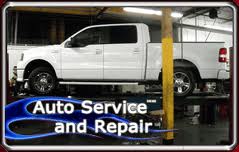
FirstComp Begins Offering PayGo Workers Comp Coverage via WorkersCompensationShop.com
At The Insurance Shop, we have always wanted to work with insurance carriers that are forward thinkers and understand the importance of the changing marketplace. It is with that idea in mind that The Insurance Shop and Markel First Comp have formed a working partnership to offer pay-as-you-go workers compensation coverage.
This program fits in with The Insurance Shop’s already existing pay-as-you-go programs and will give business owners the cash flow benefits of a PayGo program in conjunction with the benefits of the pricing and claims management standards of Markel FirstComp.
For those who aren’t familiar with the differences between a pay-as-you-go policy and a traditional workers compensation policy, here is a quick comparison between the two:
Traditional Direct Bill Policy
In a traditional workers compensation policy, a policyholder estimates their payroll for the upcoming year and the insurance carrier offers a quote based on that estimated payroll. The insured then will typically make scheduled payments based off of that quote. The most common payment plan in the industry requires a down payment of between 15-25% of the estimated premium and then 9 more monthly payments of the balance.
Then at the end of the policy period, the carrier does an audit to compare the employer’s actual payroll numbers against the estimated payroll. If the business ran more payroll than expected, it will owe more money to the carrier. If the company ran less payroll than predicted, the carrier will owe money back to the employer. Regardless of who owes whom money, there is typically an audit balance and it is due in one payment.
Since these audits are typically completed within a month of when the policy expired, this system can often create a cash flow crunch for a business. If the business owner owes money on the audit, it is coming at a time when that business has already just paid their down payment for the new workers compensation policy.
Pay-As-You-Go Policy
With a pay-as-you-go workers compensation policy, the quoting process still works the same way. The policyholder will estimate their payroll for the upcoming year and the insurance carrier offers a quote based off that amount. The difference comes when the insured wants to bind the policy.
Instead of paying between 15-25% down, the startup amount is just the expense constant (usually around $200) and any state taxes and fees assessed on the policy. This means an insured is usually spending just a few hundred dollars to get a policy in force, which is a huge cash flow advantage for the business owner.
Then, instead of making monthly payments of a set amount, The Insurance Shop will calculate and collect the workers compensation premium a company generates each time it processes payroll. If a business already uses a payroll company, we can work with that company for the PayGo program. If a business doesn’t use a payroll company, we could recommend using our sister company PaySmart Payroll.
The advantage of this method is that the insured’s workers comp premium will ebb and flow with their payroll. It also typically reduces the exposure of the end-of-year audit. Since a company is paying based on it’s actual wages instead of estimated, we typically see audit differences of less than $100 on PayGo policies.
We are pleased to announce that Markel FirstComp is now offering a pay-as-you-go workers compensation solutions for business owners. First Comp Insurance already has a strong name in the comp industry and has remained aggressive in writing workers compensation in the current hard market. FirstComp excels in insuring blue-collar risks, which makes them a wonderful fit for Pay As You Go because the construction industry typically sees payrolls vary significantly from one month to the next.
FirstComp is yet another great addition to our current line up of Pay As You Go workers compensation from excellent workers compensation insurance companies such as The Hartford, Employers, Guarantee Insurance Company, Accident Insurance, Travelers, AmeriSafe, Dallas National, and MEM.








